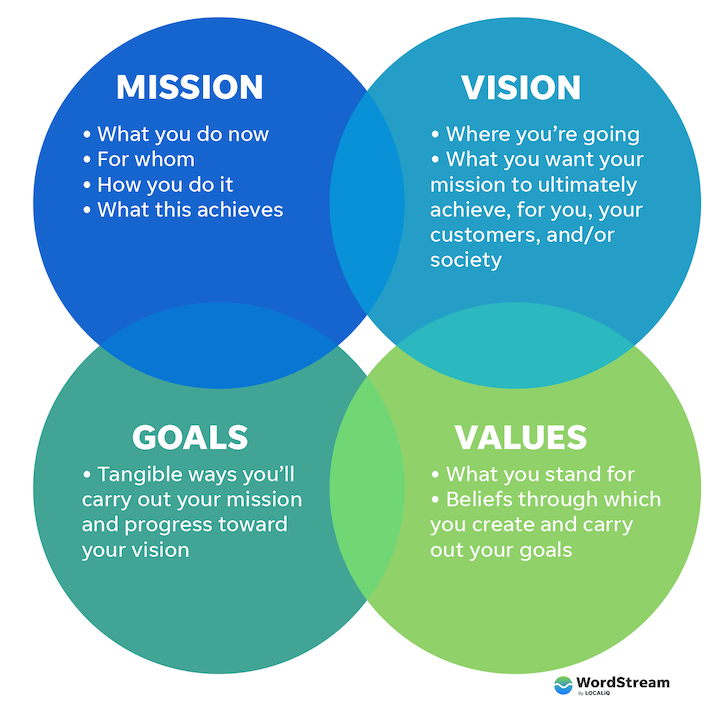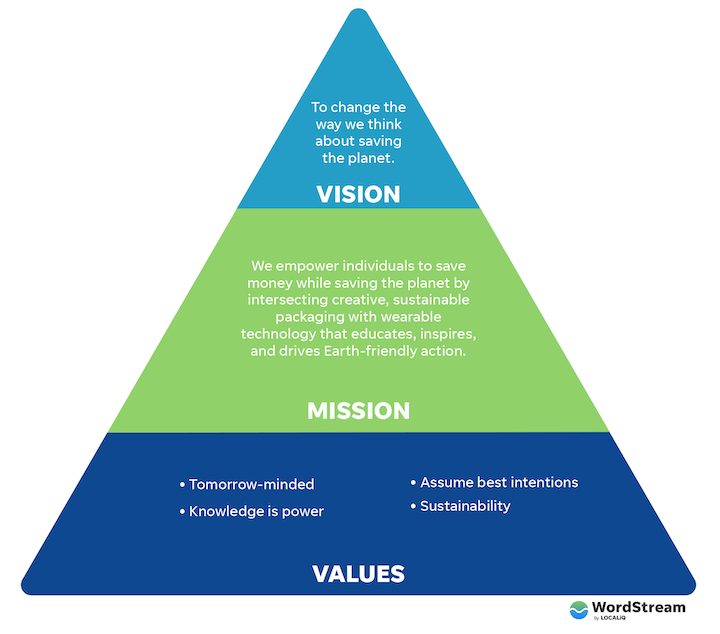Desvendando os segredos da criação de declarações poderosas de visão e missão: um guia de leitura obrigatória para empresas prósperas
Imagem cortesia de Pixabay via Pexels
Índice
- Compreendendo a diferença
- Avaliando o estado atual da sua empresa
- Definindo seus valores essenciais
- Elaborando uma declaração de visão convincente
- Desenvolvendo uma declaração de missão clara
- Revise, refine e compartilhe as declarações
- Implementando as Declarações
- Para concluir
Elaborando um atraente declaração de visão e missão é uma etapa essencial para definir os rumos da sua empresa. Essas declarações servem como um guia, proporcionando clareza e propósito à sua organização. Uma declaração de visão bem elaborada descreve suas aspirações futuras e onde você deseja chegar, enquanto uma declaração de missão define seus objetivos atuais e como você planeja alcançá-los.
Compreendendo a diferença
Antes de redigir essas declarações, é importante compreender a diferença entre uma declaração de visão e uma declaração de missão. A declaração de visão concentra-se nos objetivos e aspirações de longo prazo da empresa, pintando um quadro inspirador do que você pretende alcançar. Deve ser conciso e memorável e evocar emoções e entusiasmo entre as partes interessadas.
Por outro lado, a declaração de missão está mais fundamentada no presente. Ele descreve o propósito da sua empresa, seus valores fundamentais e as ações que você realiza para cumprir sua visão. Uma declaração de missão deve ser clara, específica e prática, fornecendo um roteiro para as operações diárias da sua organização.
Avaliando o estado atual da sua empresa
Antes de elaborar uma declaração de visão e missão, é crucial avaliar o estado atual da sua empresa. Conduza uma análise completa de seus pontos fortes, fracos, oportunidades e ameaças (Análise SWOT). Isso o ajudará a identificar seus argumentos de venda exclusivos, desafios potenciais e tendências de mercado que podem impactar sua direção estratégica.
Definindo seus valores essenciais
Os valores fundamentais são os princípios fundamentais que orientam o comportamento, a cultura e a tomada de decisões da sua empresa. Eles servem como bússola moral para sua organização, influenciando os relacionamentos com funcionários, clientes e fornecedores. Reflita sobre o que sua empresa representa e os valores que você preza. Você está comprometido com a honestidade, inovação ou sustentabilidade? Defina e priorize seus valores fundamentais, pois eles moldarão a base de sua visão e declarações de missão.
Imagem cortesia de www.wordstream.com via Imagens do google
Elaborando uma declaração de visão convincente
Sua declaração de visão deve inspirar e motivar tanto suas equipes internas quanto as partes interessadas externas. Deve ser uma representação concisa das aspirações futuras da sua empresa. Comece imaginando onde sua empresa estará nos próximos 5 a 10 anos. Que impacto você deseja causar? Pelo que você quer ser conhecido? Use essas perguntas como ponto de partida para elaborar uma declaração de visão que resuma suas ambições.
Mantenha sua declaração de visão concisa, concentrando-se no que você deseja alcançar. Em vez disso, evite frases genéricas ou clichês e busque uma mensagem única e convincente. Considere o tom e a linguagem que repercutem em seu público-alvo. Use um vívidoEncontre palavras inspiradoras para pintar um retrato de um futuro que entusiasme as partes interessadas e reúna apoio.
Exemplos de declarações de visão bem elaboradas de empresas de sucesso podem inspirar e orientar o processo de elaboração. Por exemplo, a declaração de visão da Tesla, o fabricante de automóveis eléctricos, é “criar a empresa automóvel mais atraente do século XXI, impulsionando a transição mundial para veículos eléctricos”. Esta declaração capta a sua ambição de revolucionar a indústria automóvel e marca um caminho claro para alcançá-lo.
Desenvolvendo uma declaração de missão clara
Embora a declaração de visão se concentre no futuro, a declaração de missão fundamenta a sua empresa no presente. Ele descreve seus objetivos atuais, atividades principais e como você planeja alcançar sua visão. A uma declaração de missão bem elaborada deve ser concisa, específica e prática.
Imagem cortesia de www.fiverr.com via Imagens do google
Comece definindo o propósito da sua empresa. Que problema você pretende resolver? Como você planeja fazer a diferença? Identifique as principais atividades e serviços que permitem que você cumpra sua visão. Em seguida, transforme esses insights em uma declaração de missão clara que se alinhe aos seus valores essenciais e ofereça orientação a todas as partes interessadas.
Observar exemplos de declarações de missão eficazes pode fornecer informações valiosas. Por exemplo, Declaração de missão do Google é “organizar a informação do mundo e torná-la universalmente acessível e útil”. Esta declaração simples, mas poderosa, reflete o seu compromisso em tornar a informação acessível a todos, orientando as suas atividades comerciais principais.
Revise, refine e compartilhe as declarações
Depois de redigir suas declarações de visão e missão, é crucial revisá-las e aprimorá-las. Reserve um tempo para avaliar a clareza, o alinhamento com seus valores e o impacto geral das declarações. Considere envolver as principais partes interessadas, como funcionários, executivos e membros do conselho, no processo de revisão para garantir a contribuição e a adesão coletivas.
Depois de finalizar as declarações, é hora de compartilhá-las com seus funcionários, clientes e stakeholders. Comunicar a visão e a missão por meio de vários canais, como reuniões de empresa, boletins informativos e seu site. Incentive todos na organização a compreender e adotar essas declarações, pois elas orientarão a tomada de decisões e criarão um senso de propósito e direção.
Implementando as Declarações
Elaborar uma declaração de visão e missão é apenas o começo. Para garantir a sua eficácia, estas declarações devem ser integradas no dia a dia da sua organização. Enfatize a importância de incorporar a visão e a missão na cultura da sua empresa, valores e processos de tomada de decisão. Revise e avalie regularmente até que ponto sua organização se alinha com essas declarações e faça os ajustes necessários.
Imagem cortesia de www.wordstream.com via Imagens do google
Para concluir
Elaborar uma visão convincente e uma declaração de missão é uma arte que requer introspecção, clareza e uma mentalidade com visão de futuro. Ao aproveitar essas declarações, você dá à sua organização uma direção e um propósito claros. Portanto, reserve um tempo para avaliar sua empresa, definir seus valores essenciais e redigir declarações impactantes que preparem o cenário para o sucesso de sua empresa. Seja intencional, seja inspirador e observe sua visão e missão se tornarem uma realidade que impulsiona seu negócio.



